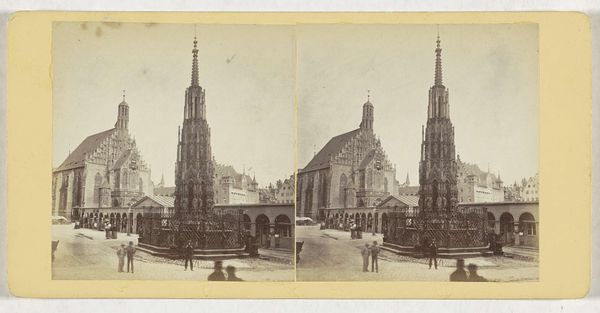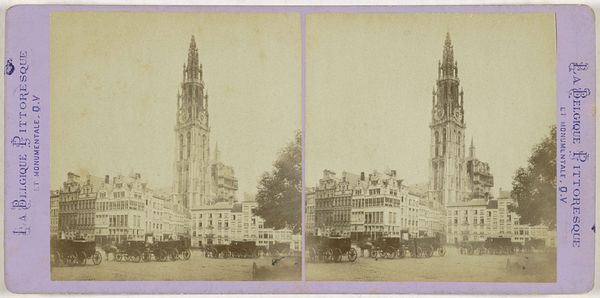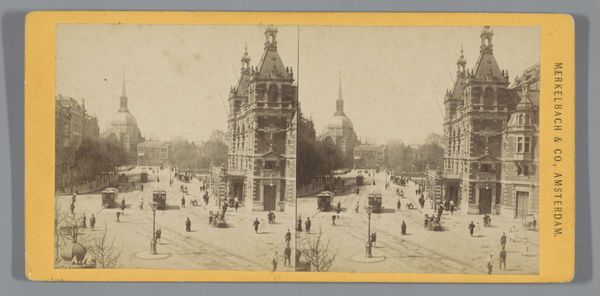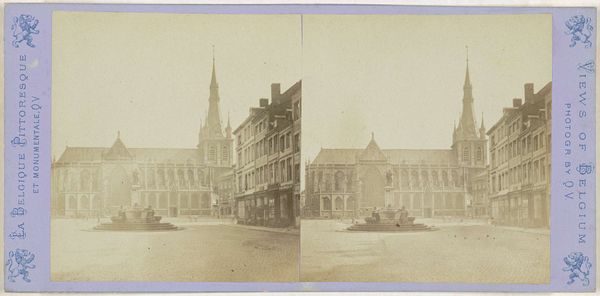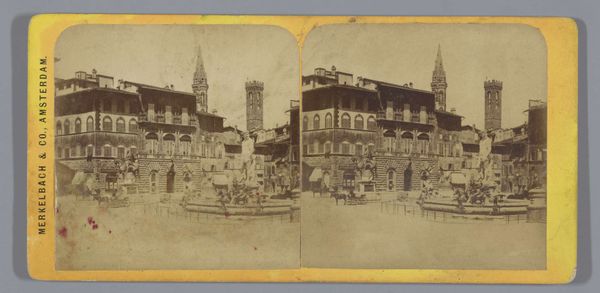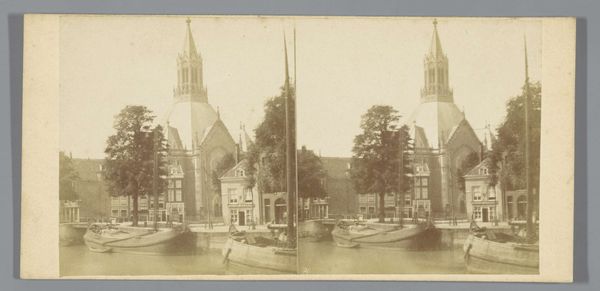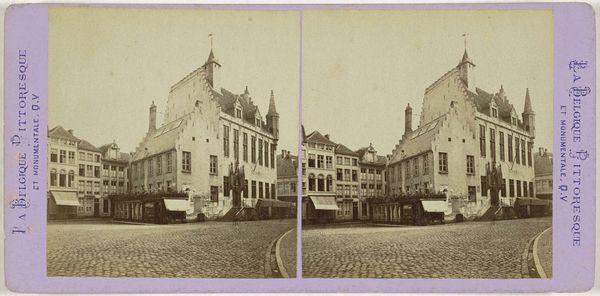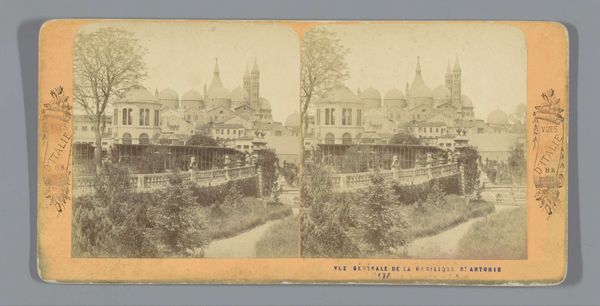
Groenplaats in Antwerpen, met het standbeeld van Peter Paul Rubens en de kathedraal 1866 - 1870
0:00
0:00
juleshippolytequeval
Rijksmuseum
photography
#
landscape
#
photography
#
cityscape
Dimensions: height 85 mm, width 175 mm
Copyright: Rijks Museum: Open Domain
Curator: Let's explore this cityscape captured by Jules Hippolyte Quéval between 1866 and 1870, titled "Groenplaats in Antwerpen, met het standbeeld van Peter Paul Rubens en de kathedraal." Editor: A sepia dreamscape. What strikes me is the profound sense of civic order juxtaposed with a spectral quietude. It makes me ponder the accessibility and purpose of public space, even back then. Curator: Quéval has composed a study in contrasts—the solid permanence of the Rubens statue anchored in the Groenplaats, countered by the delicate tracery of bare trees and the distant, looming presence of the cathedral. It is a photograph that understands how foreground, middle ground, and background engage in compositional tension. Editor: Absolutely, and that brings in an interesting juxtaposition with notions of colonial representation: Here's Rubens, whose success came from painting images which sometimes further supported empire, but, presented now as a relic, and backdrop to what was surely still, a busy thoroughfare in Antwerp? Did this kind of image seek to immortalise colonial figures without reflecting critically on its effects in its own contemporary era? I see a dissonance in immortalising history but forgetting progress towards an ethically sustainable community in Antwerp. Curator: I appreciate the perspective that foregrounds issues of class and capital. I can't disagree there is much work still to be done. But there is beauty here: Notice how the symmetry guides the eye, especially in the way the structure of the music kiosk acts as a formal counterweight to the vertical thrust of the cathedral spire? Quéval understands how architecture can create balance, despite historical and present-day inequality. Editor: Yes, and look how the frame provided by the mounted photograph also creates another formal lens for understanding Quéval's intention! Ultimately, for me, it brings up questions about accessibility—literally, the actual availability of public space—to working people in Antwerp back then and the social position of civic art and statuary. Curator: I now appreciate the historical currents flowing underneath what might seem to be merely a static landscape! Thank you. Editor: Thank you! What a fantastic image with so much contained history, yet one so redolent with important ethical and social challenges which need further exploration in our own day!
Comments
No comments
Be the first to comment and join the conversation on the ultimate creative platform.

